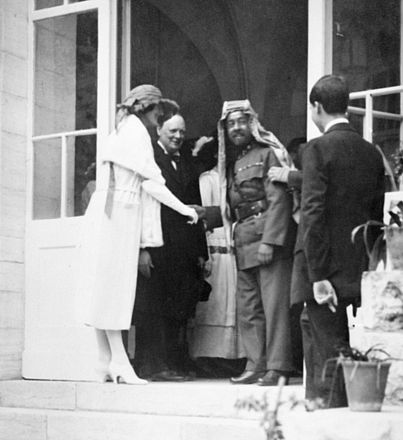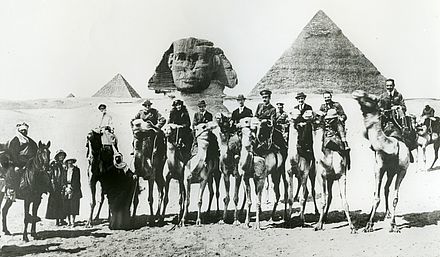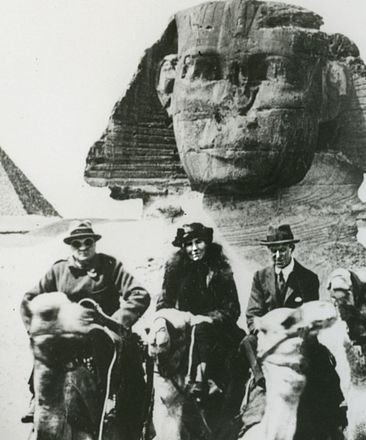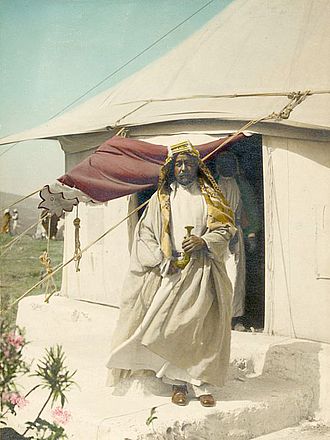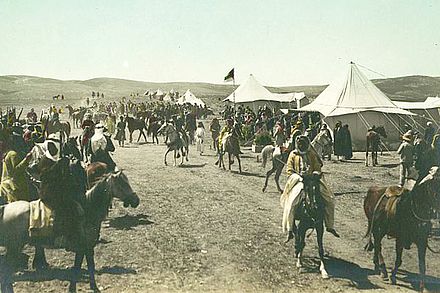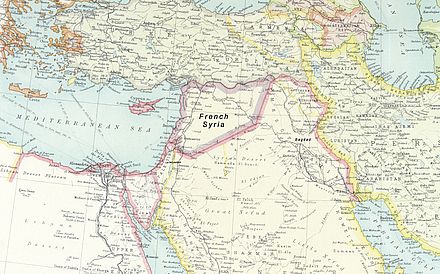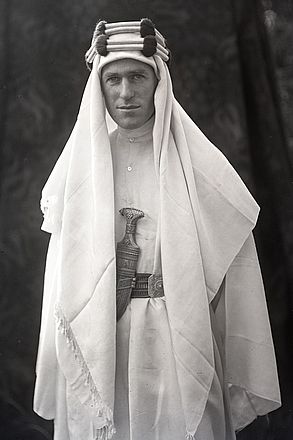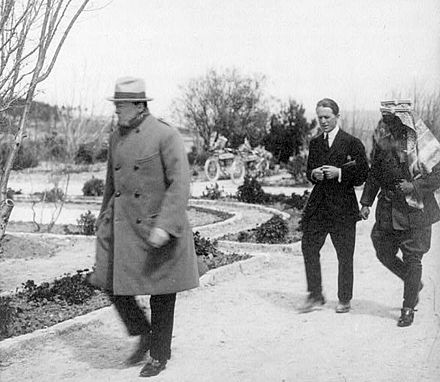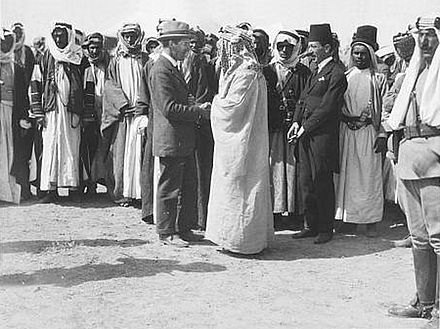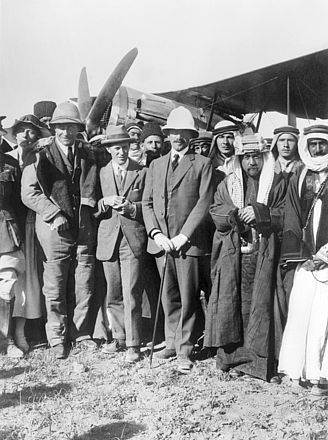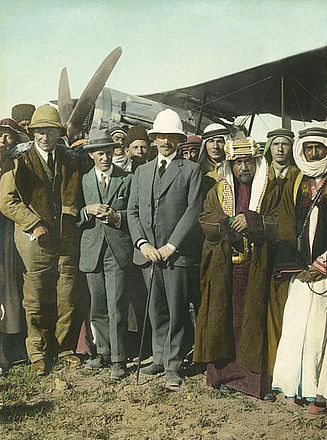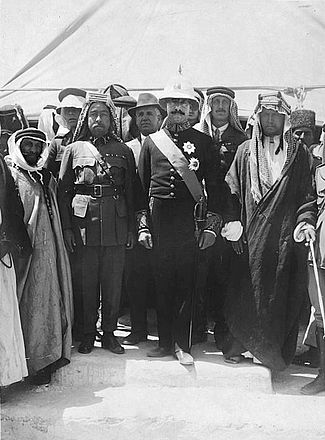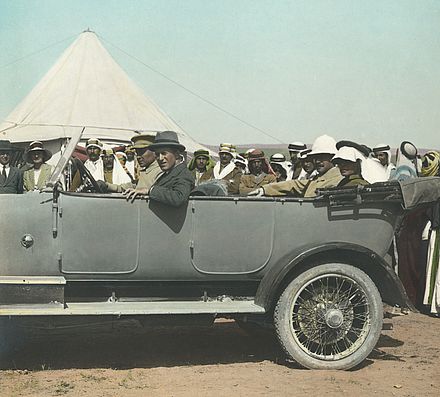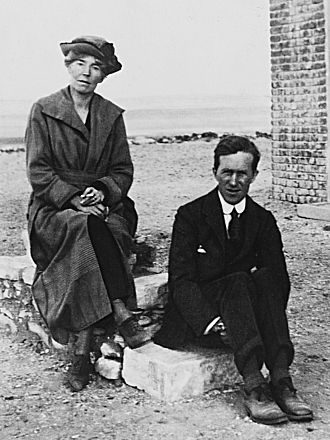The Cairo Conference — a meeting of Britain’s Middle East experts — began formally on the morning of Saturday, March 12, 1921. The conference approved a plan for giving control over two large pieces of the former Turkish territories that Britain controlled to princes in the Hashemite family. It was agreed that Prince Feisal, with whom T.E. Lawrence had worked during and after the First World War, would become king of a new country created from the Turkish Province of Mesopotamia; it would be called Iraq. His brother, Prince Abdullah, would rule a country made up of Palestine west of the Jordan River: Transjordan (now Jordan).
Quite a bit of the history and turmoil of the modern Middle East can be traced back to the Cairo Conference, where Iraq was patched together out of Shiite, Sunni and Kurdish territories. The Kurds were not given their own country. Palestine was divided in half, with an eye towards eventually giving the Jews the other half.
T.E. Lawrence was in Cairo in March 1921, working for Winston Churchill, the British Colonial Secretary, who had arranged the conference. Churchill and Lawrence had worked out this plan for Iraq and Transjordan in advance of the conference. And their plan was based on two ideas for which Lawrence had been crusading during and after the war. First, the Arabs must be given control of their own lands (as Lawrence had implied they would when the Arabs were fighting alongside him against the Ottoman Empire and for Britain). And, second, the proper Arabs upon whom to bestow this power were the members of the Hashemite family: King Hussein and his sons, including Feisal and Abdullah. Thirty-nine British men and one British woman, Gertrude Bell, attended the conference in Cairo, but none — probably including Churchill — had more influence upon its outcome than T.E. Lawrence.
“Lawrence’s work with Churchill in 1921 in a newly created Middle East Department that placed Hashemite rulers at the heads of state of two new Arab States … illustrates most strikingly his political and diplomatic functioning, the strengths and weaknesses of his personal approach to world affairs.”
—John Mack, The Prince of Our Disorder
Lawrence had left the Paris Peace Conference in Versailles two years earlier deeply frustrated by the way France and Britain had carved up the former Turkish territories with little regard for Arab rights. Winston Churchill met Lawrence at Versailles and had come away unimpressed. But something had changed after Versailles and before Cairo.
Lowell Thomas’ multimedia show on “Lawrence in Arabia” had opened in London on August 14, 1919, after the Paris Conference. It made Lawrence famous — the great British hero of the First World War. And it gave his views on the Middle East and the Arabs — expressed in the press and in meetings with the British government — much more influence. Most of Britain’s leaders saw Thomas’ show. Winston Churchill attended on more than one occasion, and his opinion of Lawrence changed.
When Churchill took over the Colonial Office, he inherited a muddled Middle Eastern policy that was fought over by different branches of the British government. And Churchill inherited an unpopular war in Mesopotamia, where British and Indian troops were fighting Arab rebels. Churchill quickly appointed Lawrence — that “Wild Ass of the desert” as some of his detractors called him — as his assistant for Middle Eastern affairs. They began to work out their plan to give Lawrence’s Arab allies part of Palestine (today’s Jordan), and Mesopotamia, which would be called Iraq. This presumably would end the war there. These countries would then join the British Commonwealth. Among the problems with this plan: Prince Feisal, who was to rule Iraq, was not from Iraq and did not control the factions fighting in Mesopotamia.
The Cairo Conference approved the plan Lawrence and Churchill had worked out. Lawrence, thereby, had fulfilled some of his promises to Feisal and the Arabs. “Everything he had hoped for when he joined the Colonial Office had been achieved,” writes Lawrence biographer Jeremy Wilson. Lawrence later called this “the period of which I am proudest.” However, the map of the Middle East that resulted from this conference would prove anything but stable over the 90 years that followed.


